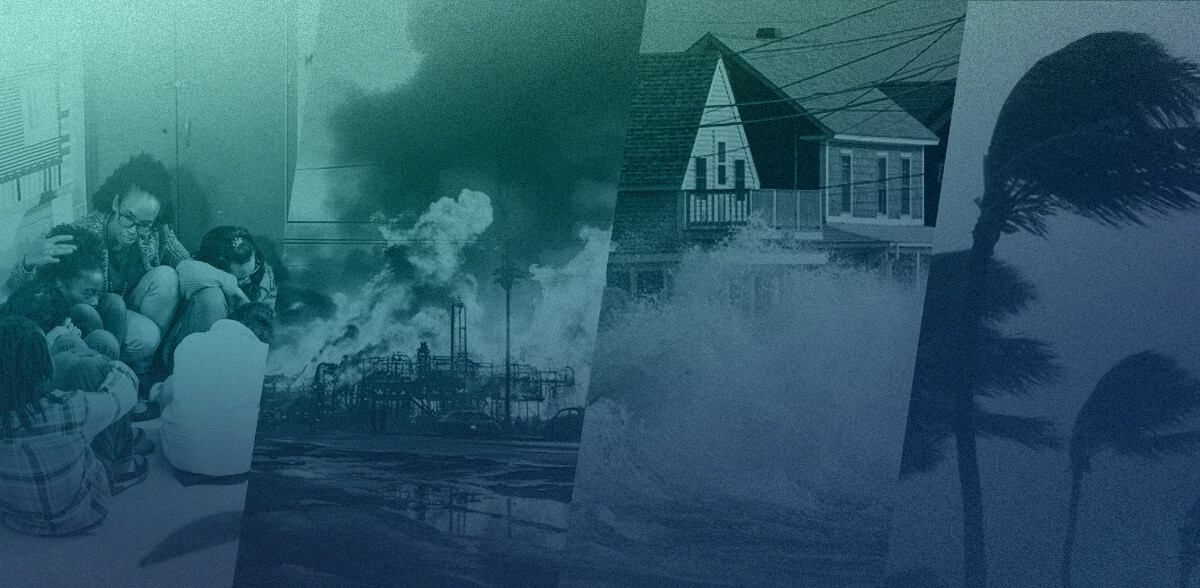Voice of the Customer: Palm Beach County 911 Enables Telecommunicators to Work Remotely with Intrado VIPER® 7 Laptops
Remote Work and Virtual PSAPs Made Possible with VIPER® 7 Laptops
Preparing for Severe Weather
The National Oceanic and Atmospheric Administration (NOAA) claims that in 2022, there were 18 weather/climate disaster events with losses exceeding $1 billion each to affect the United States. These events included droughts, floods, tropical cyclone events, wildfires, winter storms, and more. Of greater importance though, was the toll it took on families and communities across the U.S. 474 lives were lost and many more were injured during these extreme weather catastrophes.
If the extremities of 2022 have taught us anything, it’s that severe weather can strike at any moment and result in a tremendous loss. When severe weather strikes, every second counts. All organizations should have a strategic, well-tested emergency communication plan in place for severe weather. This article provides tips on how you can improve your emergency weather strategy by leveraging technology to optimize your communication processes to protect your people and assets.
Know the Terminology
To begin, make sure your team understands the different types of alerts issued by the National Weather Service (NWS) and NOAA. Typically, they send watches, advisories, and warning alerts.
A “watch” is sent when weather conditions are favorable for a specific type of event, such as a tornado or flooding. For example, a tornado watch would mean that a severe thunderstorm and tornadoes are possible. It does not mean a tornado will occur.
An “advisory” typically means a weather event is imminent but is not a severe event. For example, a winter weather advisory would be issued for 2–4 inches of snow in most areas. This is a notable occurrence, but not likely to cause long-term issues for most business and organizations.
A “warning” is issued when a severe weather event is imminent. A blizzard warning, for instance, means that a severe snowstorm is expected within the next 12–18 hours.
We recommend familiarizing your teams with the terminology, as well as relevant sirens or tones so they’re not alarmed should the forecast take a turn
Decide Who Should Receive Weather Notifications
If you haven’t already, determine who has decision-making authority within your organization. Depending on the weather condition, you should then decide who needs to be informed and how they should proceed. For example, you may decide that watches should go to executive team members and the facilities crew so they’re aware of the forecast conditions and are prepared to make contingency plans in case the forecast worsens. You may choose to send advisories to all supervisors on premises, as the weather event is imminent and may require people to leave earlier than usual. You may choose to send warnings to all personnel, as they are for imminent and potentially severe weather events, requiring people to seek shelter or prepare. Some situations, such as hurricanes or severe winter weather, often requires management to determine if and when to close the facility or make arrangements for people to stay at home.
Leverage Technology to Monitor Weather Forecasts & Optimize Your Communication Plan
Next, determine how your organization will monitor and distribute information to the appropriate stakeholder(s). Most distributed recipient mass notification systems can send secondary notifications like e-mails or texts, but only advanced emergency mass notification systems are equipped to provide immediate and intrusive audio/visual alerts required to meet NFPA (National Fire Protection Authority) standards. It’s important to understand how they differ when evaluating emergency mass notification vendors. Providing ample notice can save lives and automating weather alerts can provide the timely, effective information that people need – without requiring one-off communications. Look for an emergency notification system that can integrate with trusted sources, such as NWS/NOAA weather feeds. As the weather event develops, of course, you may want to add more personal and specific information, based on your communication plan. Most advanced notification systems allow users to integrate with third-party services and customize their notifications preferences. For example, emergency mass notification system, Intrado Revolution, integrates with NWS (National Weather Service) / NOAA weather feeds to automatically receive alerts and rapidly relay the information to people. With Revolution, users can set their geographic area, select alert levels (watches, warnings, or advisories), and the type of weather events they care to receive.
Use Multimodal Notifications to Extend Your Communication Reach
Next, determine how to communicate weather information to your stakeholders and the communication methods that resonate most effectively with your audience. Multimodal communication is important, as it widens the probability recipients will receive and acknowledge your notification. Combining intrusive audio/visual alerts, or primary emergency mass notification system alerts, with secondary distributed alerts like SMS and e-mail alerts may require different content due to factors like character limitations and audio capabilities. Try to keep messaging consistent while still maintaining within the parameters of the specific the communication tool. Advanced systems typically allow users to customize alerts, so stakeholders receive a cohesive message from your organization. This helps establish trust and credibility with your recipients because they know the information they’re receiving is truly coming from your organization.
Last, But Not Least – Test Your Systems & Conduct Drills
Conducting routine drills can help familiarize existing procedures and acquaints new ones to ensure your personnel understands what to do in the event of a real weather emergency. They’re also helpful to identify process and system inefficiencies; arming leadership teams with the valuable insight necessary to fix any issues before a real emergency were to occur. Remember, taking a proactive approach by testing your systems and conducting routine drills can save lives during a weather emergency.
Call (877) 262-3775 or fill out the form below and a representative will be in touch with you shortly.

Remote Work and Virtual PSAPs Made Possible with VIPER® 7 Laptops

The term, “Public Safety", is often described as a wide array of government responsibilities that serve to protect citizens and communities from...

September is FEMA’s National Preparedness Month, a crucial time dedicated to raising awareness about the importance of preparing for emergencies,...

Earlier this month I attended the NENA 2017 conference in San Antonio, Texas. As always, it was a great event to see old friends in the industry and...